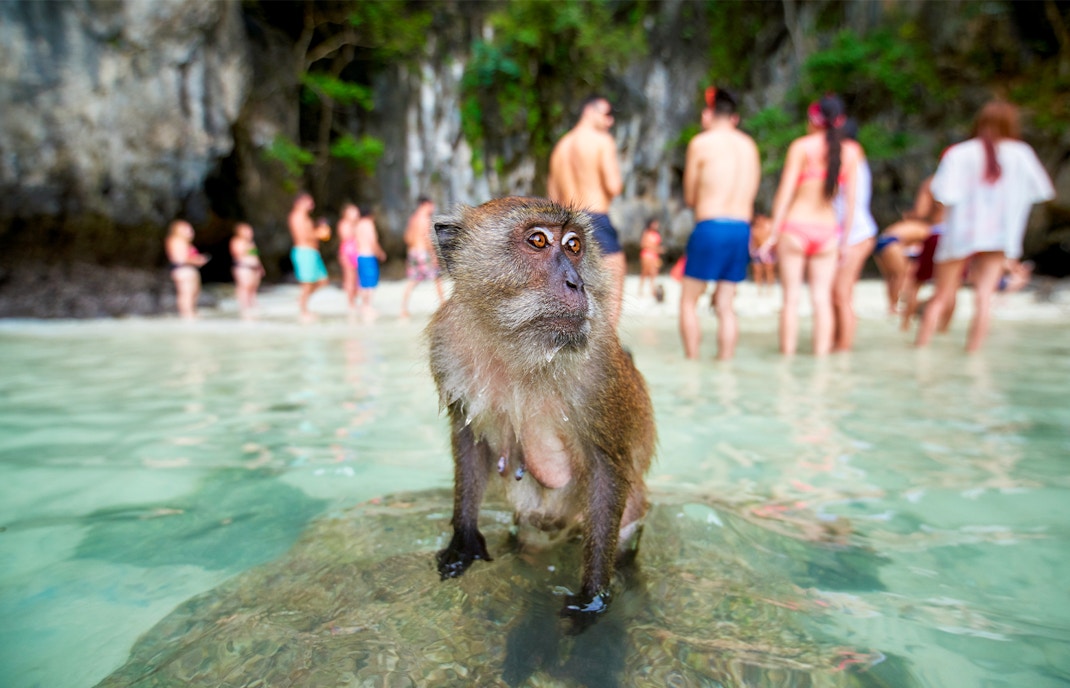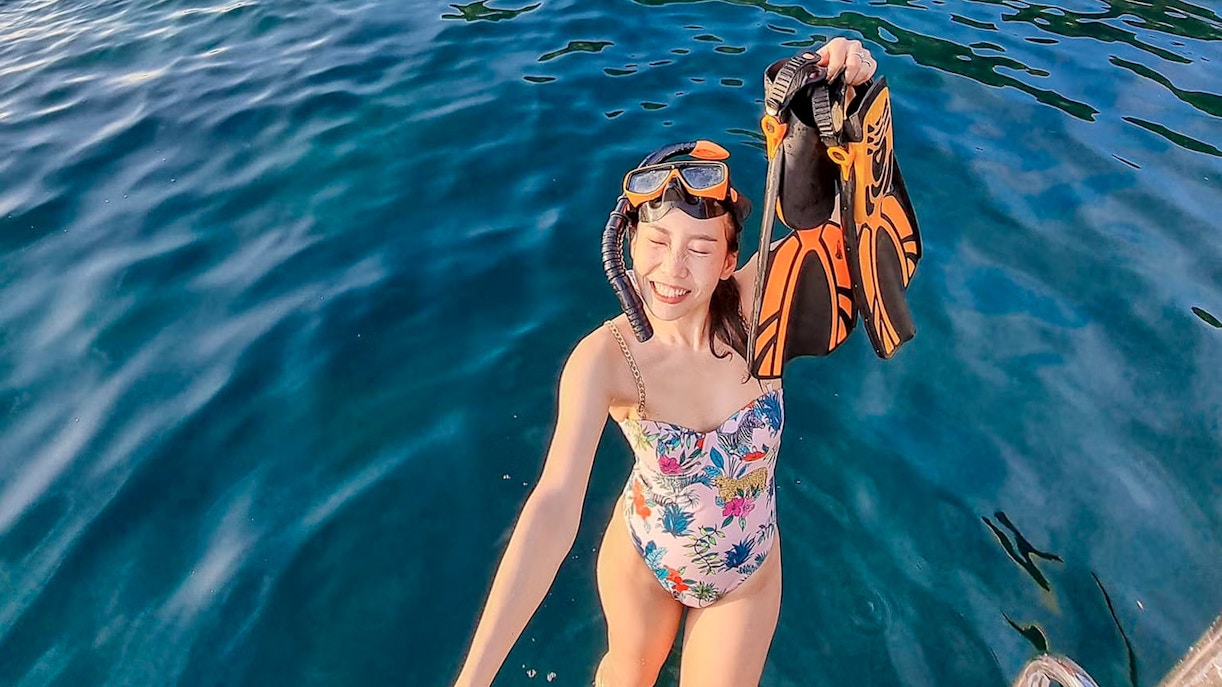- Access: Can be accessed only by boat
- Nearby areas: Tonsai Village, Loh Dalum Bay, and Laem Tong
- Boats depart: Between 9am and 3pm daily, with more trips during high season (November–April)
- Expect larger crowds between late morning and early afternoon, especially on sunny days.
Where is Monkey Beach?
You’ll find Monkey Beach tucked along the northeastern coastline of Phi Phi Don, about 15 to 20 minutes by boat from Tonsai Pier.


